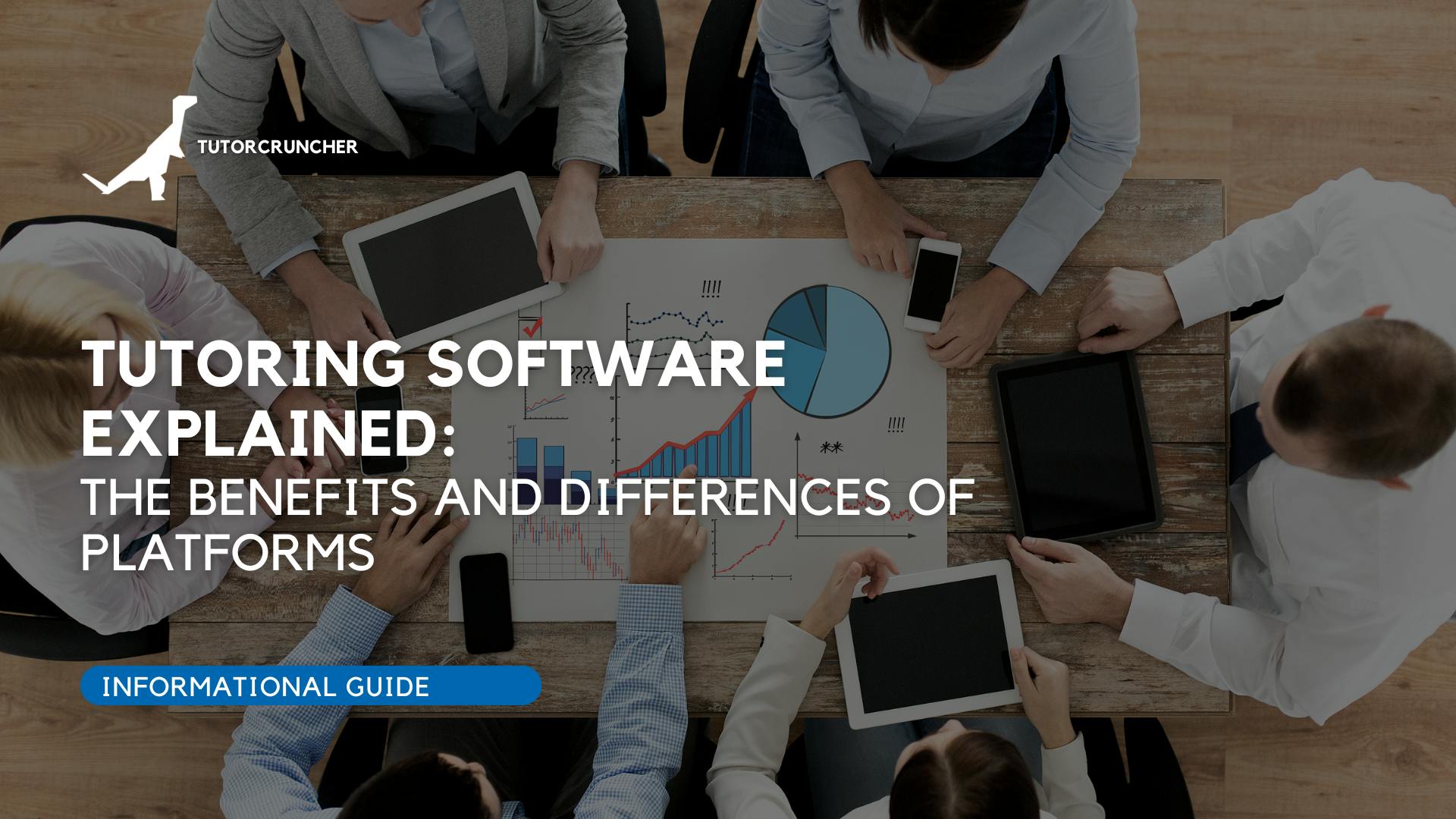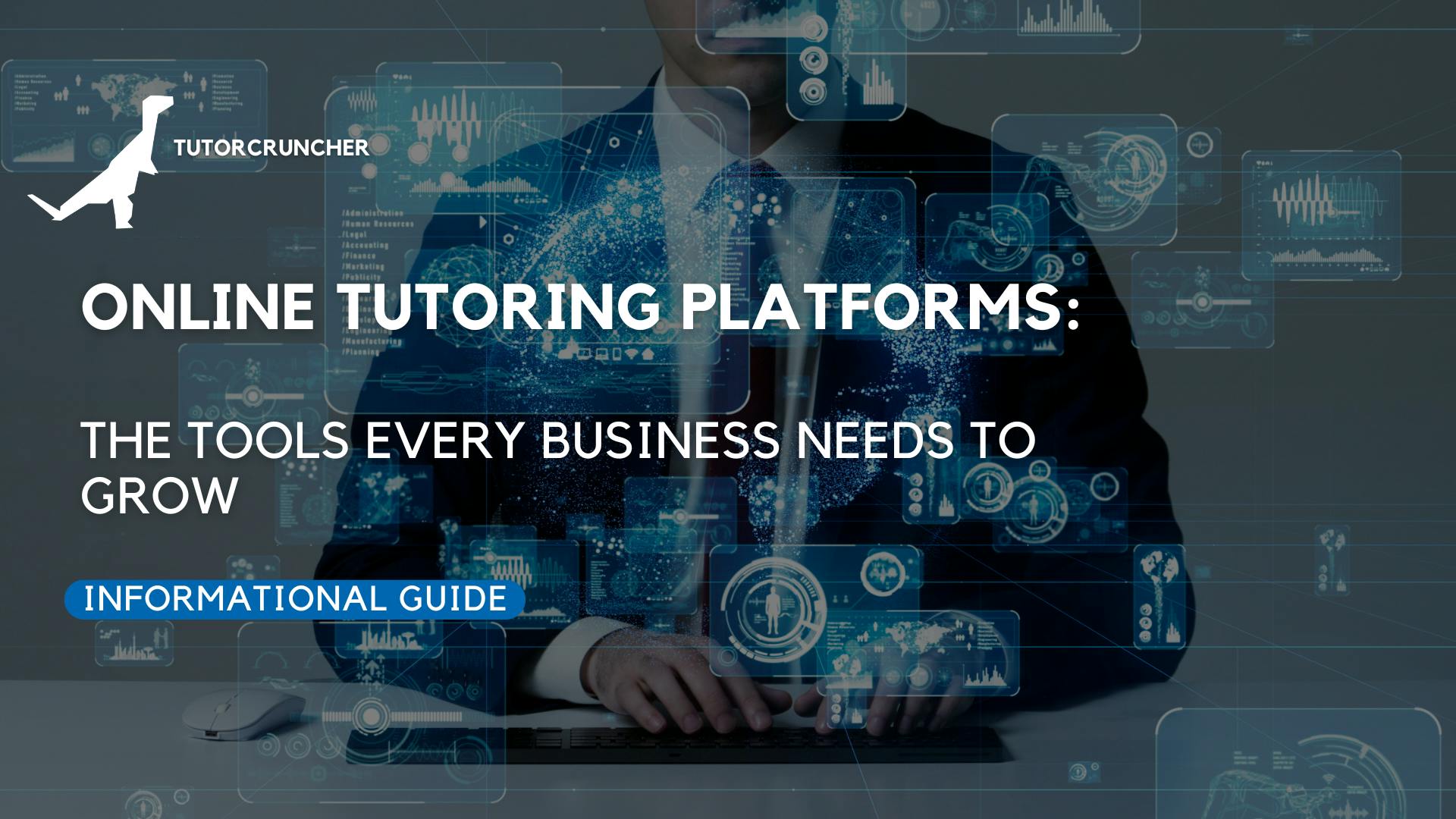The way students learn is changing fast, and in this guide, you’ll find tutoring software explained - what it is, how it works, and why it matters. These digital platforms offer personalized learning experiences and make education more accessible than ever.
Whether at home or on the go, students, parents, and educators are increasingly relying on these tools to enhance learning in ways that fit individual needs and schedules.
What is Tutoring Software?
At its core, tutoring software is a digital platform or application designed to provide personalized educational support to learners. It can range from programs offering subject-specific guidance to ones providing holistic academic support. With advances in technology, many of these software programs are now powered by artificial intelligence, allowing them to tailor instruction based on a student’s individual needs.
There are different types of software in this catch all term. Read on for more details about learning management and tutor management systems and find out what the best tutoring software is in each case.

Tuition Centre Software
Tuition centre software is an innovative solution for education management, offering a centralized platform that streamlines everything from online appointment scheduling, payment processing and data management. By integrating multiple functions into one system, it frees up time to focus on providing quality education.
Features of Effective Tuition Centre Software
- Scheduling & Attendance Tracking: User-friendly tools for swift and accurate attendance recording, allowing easy monitoring of student engagement and progress. The software generates insightful reports on student progress and provides an intuitive calendar interface for optimizing class times and preventing conflicts.
- Comprehensive Class Management: Customizable user profiles for organizing student groups, assigning tutors, and tracking progress. Advanced filtering features enable real-time oversight of class sizes and adaptation to student needs, offering flexibility in educational settings.
- Optimized Billing and Payment Processing: Automated invoice creation and distribution, with secure payment options including credit cards, Direct Debit, ACH, and bank transfers. Integration with trusted providers ensures seamless, secure transactions and timely collections.
TutorCruncher's Tutoring Management System (TMS) is a comprehensive solution that combines the features of both a Learning Management System (LMS) and a robust tuition centre software.
Key Benefits of Tutoring Software for Learning
In most cases the best tutoring software will focus on student outcomes but different technologies definitely have overlap. For instance, our tutor management software contains all the components of a learning management system combined with the ability to manage a full tutoring business.
- Personalized Learning: Tutoring software often uses data analytics and AI to understand a student's strengths, weaknesses, and learning styles. This means each lesson can be tailored to the individual, ensuring optimal understanding and retention.
- Flexibility and Accessibility: These platforms are typically available 24/7, enabling students to learn at their own pace and on their own schedule.
- Cost-Effective: While there's an initial investment, tutoring software can often be more affordable in the long run than traditional tutoring.
- Immediate Feedback: Digital platforms can provide instant feedback, allowing students to understand their mistakes in real-time and adjust their learning strategies accordingly.
- Diverse Learning Materials: From videos, quizzes and interactive simulations to digital whiteboards, students have an array of resources at their fingertips.
Considerations When Choosing Tutoring Software

- Subject Coverage: Ensure the platform covers the subjects and topics you need.
- User Experience: An intuitive interface is essential for effective learning.
- Price: While you shouldn’t skimp on education, ensure you’re getting value for money.
- Reviews and Recommendations: Check out user reviews and ask for recommendations to ensure software efficacy.
- Compatibility: Ensure the software works well on your device and has any needed integrations.
- Business: Does it take care of your business needs such as scheduling and invoicing. The best tutoring software should take care of learning and business.
The Future of Tutoring Software
With the rapid advancements in technology, the future of tutoring software looks promising. We can expect:
- More Integration with AR and VR: Augmented and virtual reality can provide immersive learning experiences.
- Increased Use of AI: As artificial intelligence evolves, its role in personalizing education will become even more profound.
- Wider Accessibility: As software becomes more available, students from all backgrounds will benefit from personalized tutoring.
Automation in Tutoring Software

As tutoring businesses grow, so does the complexity of managing schedules, tracking student progress, and keeping up with admin. That’s where automation in tutoring software becomes a game changer.
Modern tutor management software like TutorCruncher now offers built-in tools to cut down on time-consuming administrative tasks, helping tutors and business owners alike to focus on what really matters, delivering quality education.
With TutorCruncher, education management automation is built into the core of the platform.
As we’ve previously touched on above, the key features include:
- Automated scheduling and smart calendar coordination
- Automated invoices, recurring payments
- Integrated attendance tracking, session logs, and reports
Whether you’re running a team of individual tutors, managing online tutoring, or supporting tutoring centres, automation reduces repetitive tasks, improves accuracy, and frees up valuable time. The result is a smoother student experience, less manual work, and better business performance. From lesson plans to automated reminders, TutorCruncher helps you stay organised and informed, so you can make data driven decisions with confidence.
AI in Tutoring Software
Artificial intelligence in education is one of the most exciting developments in educational technology, and it's already beginning to shape how students learn in today’s digital classrooms! While AI in tutoring software is still in its early stages, it’s opening doors to personalized learning experiences that support student success in new and engaging ways.
That said, we believe AI tutoring is here to support tutors - not replace them. While AI-powered tools can improve the learning process, they can’t yet replicate the judgement, emotional intelligence, and adaptability of human tutors. At TutorCruncher, we’re optimistic about the future of AI integration and committed to using emerging technologies in a way that aligns with quality education and supports every learner's unique journey.
As the field grows, we’re excited to continue developing AI-powered tutoring features that help tutors create more tailored, data-informed lesson plans and better track student progress, ensuring that every student receives instruction that fits their pace, goals, and potential.
Types of Tutoring Software:
The fields of education and technology frequently overlap, leading to an array of software solutions that cater to various educational needs. Two such solutions are Learning Management Systems (LMS) and Tutor Management Software (TMS). Though they both fall under the umbrella of educational technology, they serve distinct purposes and possess different features. Let's delve into their differences.

Learning Management Software (LMS)
Definition: An LMS is a digital platform designed to administer, document, track, and report on the delivery of educational courses, training programs, or learning and development programs.
Primary Functions:
- Content Delivery: Allows educators to upload and organize course materials, such as videos, slides, and reading materials, which can be accessed by students.
- Assessments and Quizzes: Facilitates the creation, administration, and grading of quizzes and exams.
- Tracking and Reporting: Monitors student progress, participation, and performance, providing detailed reports to educators or institutions.
- Collaboration Tools: Provides features like discussion forums, chat rooms, and collaborative boards to foster student interaction.
- Integration: Often integrates with other systems like school registration systems, libraries, or other educational tools.
Examples: Moodle, Blackboard, Canvas, Coursera.
Tutor Management Software (TMS)
Definition: A TMS is specifically designed to aid individual tutors or tutoring businesses in managing and organizing their operations, from student information and scheduling to billing and communication.
Primary Functions:
- Scheduling and Appointments: Helps tutors set up, modify, or cancel tutoring sessions and send reminders to students.
- Billing and Invoicing: Streamlines the payment process by creating invoices, tracking payments, and managing financial reports.
- Student Database: Maintains a repository of student details, including contact information, academic history, and progress notes.
- Communication Tools: Facilitates communication between tutors and students or their parents through integrated messaging or email features.
- Session Notes and Progress Tracking: Allows tutors to make notes about each session and track a student's progress over time.

Examples: Teachworks, TutorCruncher, TutorPanel.
In Summary
While there's some overlap in features, especially in modern software solutions that try to be more comprehensive, the primary distinction is in the core purpose:
- LMS is more course-centric, focusing on the delivery, tracking, and management of educational content and student progress in a broader learning environment, often used by schools, colleges, and businesses.
- TMS is tutor-centric, emphasizing the logistical and operational aspects of running a tutoring service, such as scheduling, billing, and one-on-one communication.
In essence, while both tools aim to enhance the educational experience, their target audiences and core functionalities differ. An LMS is geared more toward broad educational institutions and their courses, while a TMS is designed with individual tutors or tutoring businesses in mind.
By integrating LMS capabilities within its TMS framework, TutorCruncher eliminates the need for separate systems, offering a unified platform that streamlines operations, enhances communication, and improves the overall learning experience. This all-in-one approach makes TutorCruncher an ideal choice for small, medium, and large-scale educational businesses looking for a scalable and efficient solution to manage their tutoring services.
Frequently Asked Questions
Is tutoring software effective for all age groups?
Most tutoring software is designed to support a wide range of learners. However, it’s important to choose a platform that matches the student's age, skill level, and learning style for the best results.
How does tutoring software compare to human tutors?
While tutoring software provides flexibility, personalization, and cost benefits, human tutors offer real-time interaction, motivation, and deeper understanding. A blended approach—using both—can maximize learning outcomes.
Can tutoring software be used on multiple devices?
Many platforms support multi-device access, allowing students to switch between computers, tablets, and smartphones. However, it’s best to verify compatibility with the specific software provider.
Is there a risk of students relying too much on tutoring software?
Students should use tutoring software as a learning aid rather than a replacement for traditional education. Encouraging a balanced approach ensures they develop critical thinking and problem-solving skills.
How secure is personal data on these platforms?
Reputable tutoring platforms follow strict data protection measures. Always review the provider’s privacy policies and confirm compliance with relevant data security regulations.


